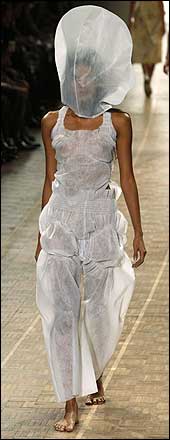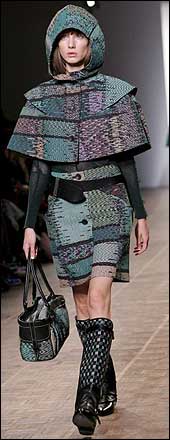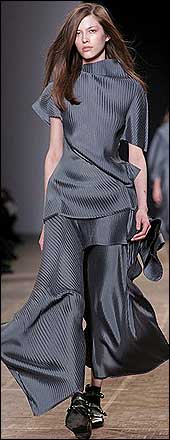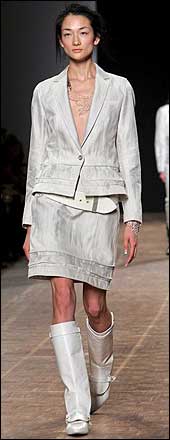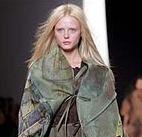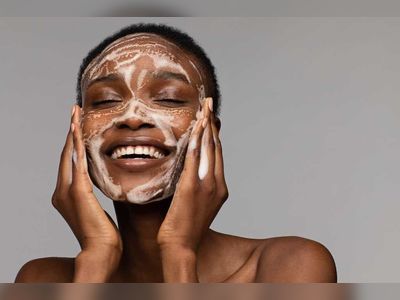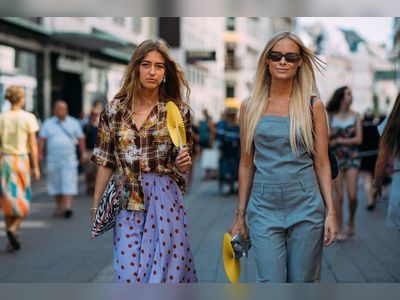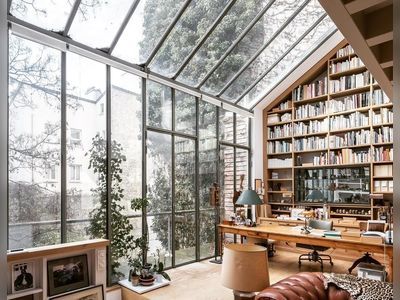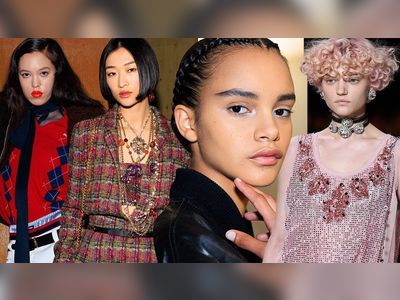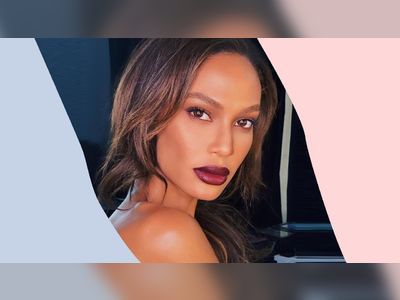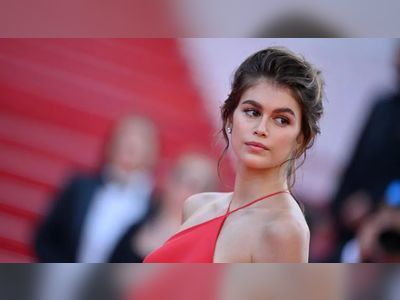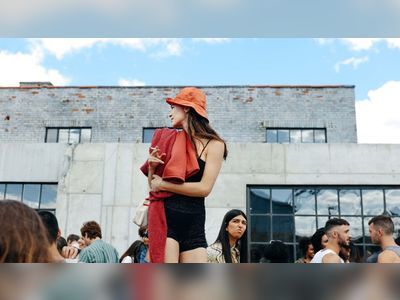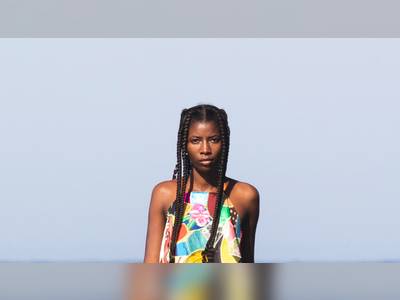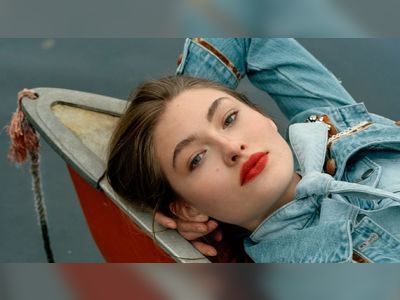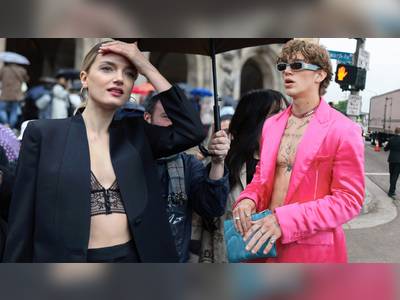Fujiwara drew upon the strengths of Miyake, taking the clothes in directions which seem quite logical and move the brand forward.
Thus, there were inspired anoraks, parkas and cagouls in bright, polyester cotton sheen, which were voluminous and randomly-pleated (worn with totally inappropriate, but fun tulle skirts), which recalled the functional fashion theories behind Miyake’s WindCoat range.
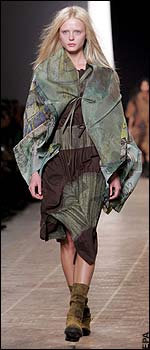
Fujiwara explored some of the concepts of Pleats Please, with straightforward tube dresses and coats in bright primaries.
More
innovative was his jacket and skirt in crumpled, brown organza-like
fabric, which had been ruched and crushed to look like autumn leaves.
Bright teal patterned tops and skirts, inspired by ‘Echoing Green’, a
poem by William Blake, and voluminous, djellaba-like shapes, in
watercolour prints, inspired by the wings of a bird, and worn with
coloured suede boots, injected a rainbow burst of colour.
Quirky men’s coats were printed with clown faces. Witch-like garments in grey, cream and black double-knit mesh, with trailing fringes, were woven with contrasting gold thread to replicate the body’s skeleton.
The “bag head” accessories, however, – where the models faces were enclosed in semi-transparent bags – seemed a touch unnecessary.
Fujiwara was, in fact, the second Japanese designer, after Junya Watanabe, to get into this odd cover-up-the-face vibe.
A sense of lightness returned for the finale, however, with ruched, gathered and pouched dresses were made from disposable paper, using a new technique developed by Miyake A-POC (A piece of cloth).
Issey Miyake autumn/winter 2008/2009 collection
Photographs by AP
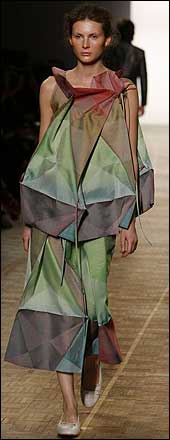

Issey Miyake autumn/winter 2008/2009 collection
Photographs by Reuters
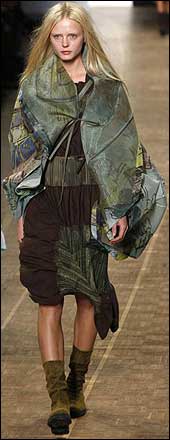
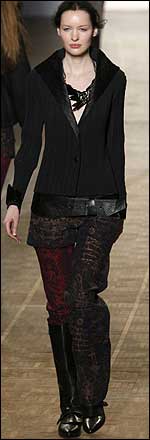
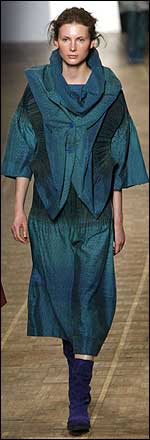
Issey Miyake autumn/winter 2008/2009 collection
Photographs by EPA
